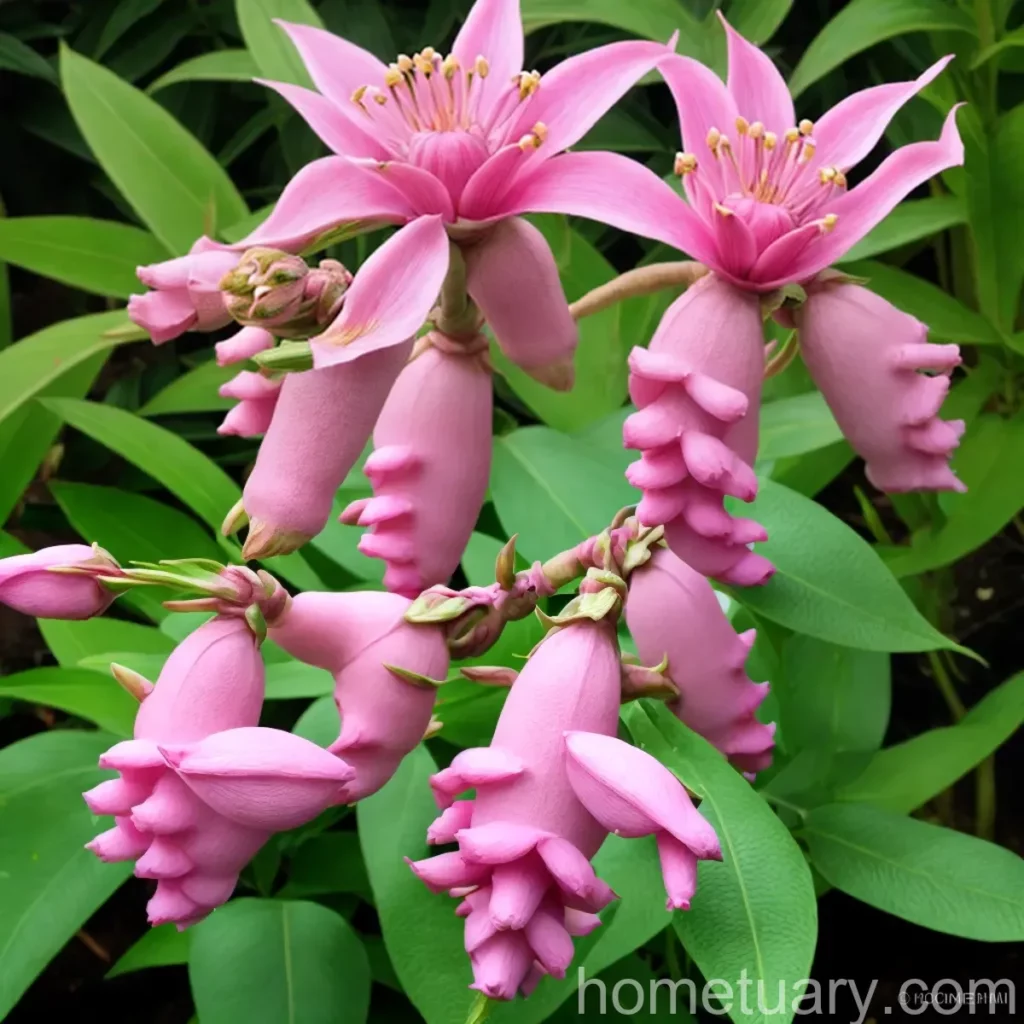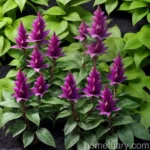The Versatile Pink Turtlehead (Chelone lyonii)
In the realm of plant species, the Pink Turtlehead (Chelone lyonii) stands out for its unique appearance and versatile uses. As a plant scientist, I am particularly fascinated by the diverse characteristics, cultural requirements, and landscape applications of this intriguing perennial.
What is Pink Turtlehead?
The Pink Turtlehead, scientifically known as Chelone lyonii, is a flowering perennial plant with distinct pink, tubular flowers that resemble the head of a turtle – hence the name “turtlehead.” This North American native plant is commonly found in wetland areas, producing clusters of vibrant blooms during the late summer and early fall.
Key Takeaways
- Chelone lyonii is also referred to as Turtlehead flower.
- Its unique characteristics make it a popular choice for gardens and landscapes.
- The plant is known for its attractive foliage and deer-resistant nature.
Now, let’s delve deeper into the various aspects of the Pink Turtlehead, including its culture, uses, and maintenance requirements.
Culture
Understanding the cultural needs of the Pink Turtlehead is essential for successful cultivation. This includes considerations related to water, sunlight, fertilizer, soil, and pruning.
Water
The Pink Turtlehead thrives in moist to wet soil conditions, making it an ideal choice for rain gardens, pond edges, and other damp areas in the landscape. Adequate watering is essential, especially during the establishment phase, to ensure the plant’s root system develops properly.
Sunlight
While Pink Turtlehead plants prefer partial shade to full shade conditions, they can tolerate some dappled sunlight. In hot climates, providing them with morning sun and afternoon shade can help prevent leaf scorching and promote healthier growth.
Fertilizer
When it comes to fertilizing Pink Turtlehead plants, a balanced, slow-release fertilizer applied in the spring can support their growth and flowering. However, it’s important to avoid over-fertilization, as excessive nutrients can lead to leggy growth and reduced flowering.
Soil
The ideal soil for Pink Turtleheads is rich, moist, and well-draining. Organic matter, such as compost or peat moss, can be incorporated into the soil to improve its moisture retention and nutrient content, creating a conducive environment for the plants to flourish.
Pruning
Pruning Pink Turtlehead plants primarily involves removing dead or damaged foliage and spent flower stalks. This practice not only enhances the plant’s appearance but also supports its overall health and vigor.
Uses
The Pink Turtlehead offers a myriad of uses, both in natural habitats and cultivated landscapes. From its appeal to pollinators to its ornamental value in gardens, this plant serves various purposes.
Wildlife Attraction
One of the notable uses of Pink Turtlehead plants is their ability to attract wildlife, particularly pollinators. The tubular flowers act as a nectar source for butterflies, bees, and hummingbirds, adding biodiversity to the surrounding ecosystem.
Garden Design
In garden settings, Pink Turtleheads can be utilized in various design applications, including woodland gardens, borders, and shaded areas. Their striking foliage and late-season blooms contribute to the visual interest and diversity of plantings.
Wetland Restoration
Given its natural habitat in wetland areas, the Pink Turtlehead plays a significant role in wetland restoration projects. Its ability to thrive in moist conditions makes it a valuable addition to efforts aimed at enhancing and preserving these critical ecosystems.
Propagation
Propagation of Pink Turtlehead plants can be achieved through various methods, including division and seed propagation.
Division
Dividing mature Pink Turtlehead clumps in the early spring allows for the creation of new plantings. This process not only helps rejuvenate the original plant but also provides additional specimens for expanding its presence in the landscape.
Seed Propagation
Collecting and sowing Pink Turtlehead seeds can be a rewarding way to propagate the plant. However, it’s important to note that seed propagation may require patience, as it can take some time for seeds to germinate and develop into robust plants.
Container Popularity
The Pink Turtlehead’s adaptability to container gardening has also contributed to its popularity among home gardeners and landscapers.
Container Planting
When selecting a container for Pink Turtlehead plants, it’s crucial to choose one with adequate drainage holes to prevent waterlogging. Using a high-quality, well-draining potting mix is also essential for promoting healthy growth in containers.
Ornamental Display
By incorporating Pink Turtleheads into container displays, individuals can enjoy their charming blooms and lush foliage on patios, decks, or other outdoor spaces. This approach also allows for greater control over moisture levels, which can be particularly beneficial in regions with unpredictable rainfall patterns.
Common Diseases
As with any plant species, Pink Turtleheads are susceptible to certain diseases and pests. Understanding these potential issues is crucial for implementing preventative measures and maintaining plant health.
Disease Diagnosis
Common diseases that may affect Pink Turtlehead plants include powdery mildew, leaf spot, and root rot. Regular monitoring for symptoms such as discolored or distorted foliage can aid in early disease detection and prompt treatment.
Pest Control
While Pink Turtleheads are generally resistant to deer browsing, they can still be targeted by certain pests, such as slugs and snails. Implementing pest control measures, such as physical barriers or organic repellents, can help protect the plants from damage.
Botanist’s Tips
For those interested in cultivating Pink Turtlehead plants, here are some valuable tips from a plant scientist:
- Selecting Suitable Locations: Choose planting sites with consistent moisture and dappled shade for optimal growth.
- Mulching: Applying a layer of organic mulch around Pink Turtleheads can help retain soil moisture and suppress weed growth.
- Supporting Wildlife: Embrace the presence of pollinators and other beneficial wildlife attracted to Pink Turtlehead plants, as they contribute to a thriving ecosystem.
Fun Facts
To further appreciate the unique charm of the Pink Turtlehead, here are some intriguing and delightful facts about this captivating plant:
- Pink Turtlehead flowers are often described as resembling the open jaws of a turtle, adding a whimsical touch to garden landscapes.
- The genus name “Chelone” is derived from the Greek word for tortoise, further emphasizing the turtle-like association of the plant’s flowers.
- Pink Turtleheads have been used in traditional herbal medicine, with some native American tribes utilizing parts of the plant for medicinal purposes.
Links to External Resources
For additional information on Pink Turtleheads and related topics, explore the following external resources:
- Plant Care Guide for Pink Turtlehead (Chelone lyonii)
- Wildlife Gardening Tips for Attracting Pollinators
- Wetland Restoration and Native Plant Species
In conclusion, the Pink Turtlehead (Chelone lyonii) stands as a remarkable plant species with distinctive characteristics and diverse applications. Whether enhancing natural habitats or adding beauty to cultivated landscapes, its presence enriches and enlivens its surroundings. By embracing its cultural requirements and understanding its uses, individuals can foster the growth and vitality of this captivating perennial, contributing to the overall richness of the plant kingdom.
In this extensive exploration of the Pink Turtlehead, we’ve delved into various facets of its cultivation, uses, and significance. From cultural considerations to propagation methods and botanical insights, the Pink Turtlehead stands out as a plant of considerable value and appeal. As a plant scientist, I am continually inspired by the depth and diversity of plant species, and the Pink Turtlehead exemplifies the inherent wonder and beauty of the botanical world.















